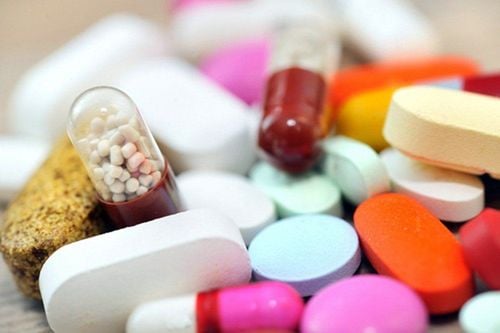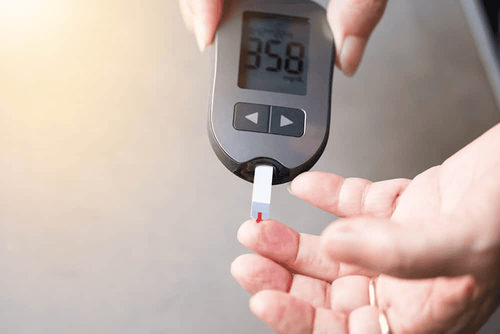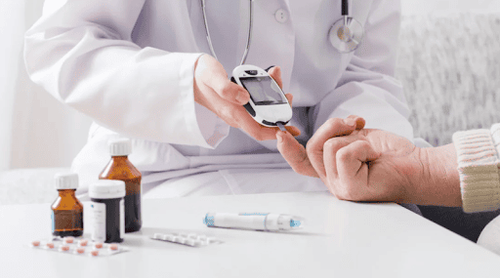This is an automatically translated article.
Glaritus is an injectable drug used for subjects with diabetes, sugar metabolism disorders. Let's find out more about what Glaritus drug works for? Dosage and notes when using how in the following article.
1. What is Glaritus?
Glaritus is an injectable drug that belongs to the list of prescription diabetes drugs. Glaritus drug is manufactured by Wockhardt., Ltd - INDIA, according to the domestic registration number VN - 10629 - 10.
The main ingredient in Glaritus is the active ingredient Insulin glargine with 100UI content. Glaritus is prepared in the form of a solution for injection. Packing 1 box of Glaritus with 3 ampoules of 3ml. The medicine box is white, purple, the content is printed in red, and the drug name Glaritus is printed in black.
2. What does Glaritus do?
Glaritus is effective in reducing high blood sugar in adults and children from 6 years of age according to directions. Glaritus is absorbed by parenteral route, metabolized in the liver by hydrolysis, and excreted in the urine.
3. Indications for taking Glaritus
Glaritus drug is indicated for the following subjects:
Type 1 diabetes – insulin dependent; Type 2 diabetes when oral treatment is not effective; Children are thin and weak, malnourished, and have disorders of sugar metabolism; Inducing insulin shock in psychiatric treatment.
4. How to use and dose Glaritus
How to use Glaritu:
Glaritus is prepared in the form of an injectable solution by medical staff. When injecting Glaritus, it is necessary to inject at the same time and repeat the same. It is necessary to use the injection pen correctly, understand the possible problems and how to handle it when injecting Glaritus. Select a certain injection area, each time should be injected at different locations. Because of its long-term dependence on subcutaneous administration, Glaritus should not be administered intravenously because of the risk of severe hypoglycaemia. Inject Glaritus directly according to the instructions, do not mix with other drugs or mix before injection. Dosage of Glaritus:
Glaritus has a long-lasting effect, so the doctor adjusts the dose depending on each specific situation. Before taking Glaritus, the doctor will also instruct whether to test blood sugar, urine or not, then prescribe accordingly.
Taking Glaritus can be combined with another shorter-acting insulin. If you are taking moderate or short-acting insulin, switching to Glaritus may require an adjustment in the basal dose and concomitant antidiabetic agents.
When intermediate insulin doses are used twice a day, when switching to Glaritus once a day, the starting dose needs to be adjusted down by 20-30%. Thereafter, dose adjustment should be based on individual patient response. The dose reduction should be compensated for by increasing the amount of insulin at the meal. Further adjustment depends on the individual patient.
In addition, antibody-induced subjects with high-dose insulin therapy may respond well with insulin improvement similar to that of human insulin, including Glaritus. Metabolic control is also required by monitoring the transition in these subjects.
An improvement in metabolic control, resulting in increased insulin sensitivity, may necessitate an increased dose adjustment with Glaritus and other insulins or an antidiabetic regimen - an increase in dose may be necessary.
Dose adjustment is also necessary for subjects with changes in weight, lifestyle, injection time or increased susceptibility to hypo/hyperglycemia or comorbidities. Changing insulin dosage requires the supervision of a doctor/pharmacist.
5. Contraindications to taking Glaritus
Glaritus is not used for subjects with a history of allergy / hypersensitivity to the ingredients in the drug.
6. Notes when using Glaritus injection pen
To use Glaritus safely, the manufacturer also provides a safety warning, pay attention when using the injection pen as follows:
Attach a new, compatible needle to the injection pen before each injection; Safety test before each Glaritus injection; Each injection pen is only for 1 patient; Make sure insulin is not contaminated with alcohol/antiseptics or other impurities; Do not refill the empty syringe, but dispose of it properly; If the injection pen is damaged, it should not be used; The outside of the injection pen can be cleaned with a wet cloth; Do not immerse the injection pen in water as it will damage the pen; Strictly comply with usage, dosage, diet, injection technique; Ask your doctor as soon as you see a problem with the injection pen.
7. Glaritus side effects
When using Glaritus can cause gum side effects:
Low blood sugar; Itchy rash; Angioedema ; Shortness of breath; Hypotension; heart palpitations; Visual disturbances; Presence of anti-insulin antibodies; Temporary water retention; Taste disorder; Muscle pain. It is necessary to inform the doctor about the side effects when using Glaritus for monitoring and management.
8. Glaritus . interaction
When taking Glaritus there are some drug interactions you should know:
Angiotensin; Disopyramide; Fluoxetine; Fibrates; Monoamine oxidase inhibitors (MAO; Pentoxifyllin; Ropoxyphen; Salicylates; sulfonamide antibiotics; Corticosteroids; Danazol; Diazoxid; Diuretics; Glucagon; Isoniazid; Contraceptives; Phenothiazine derivatives; Salbutamol; Terbutalin; Beta-blockers; Clonidine; Salts); Lithium; Pantamidine Tell your doctor before you are prescribed any medications you are taking. prescription drugs, to be used as prescribed by your doctor/pharmacist.If you have any questions regarding Glaritus, please contact your doctor for answers.













